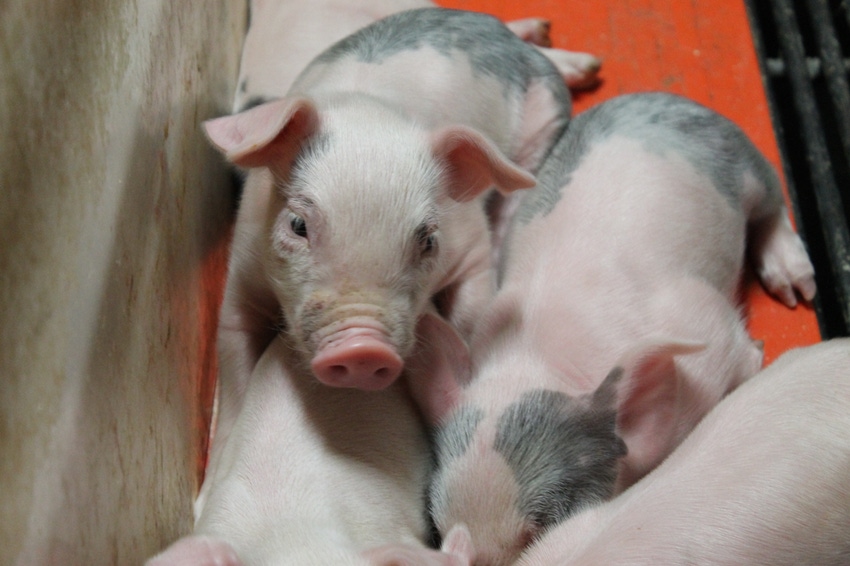Explosion of Duroc line usage could partially explain increased incidence of ETEC in commercial swine.
December 23, 2020

It has been our observation over the past few years that enterotoxigenic E. coli (ETEC) has made a more common appearance in post-weaned pigs. Strains of ETEC that cause disease in pigs possess two types of virulence factors, fimbrial adhesins and enterotoxins. Most commonly, we identify F18 and K88 fimbrial adhesins, but there are five different strains described to cause ETEC in swine. These finger-like projections off the E. coli bacteria brush up against the lining of the small intestine searching for specific receptors that they can attach to. When they find these receptors, they attach and colonize the surface of the cell. The susceptibility of the pig to ETEC is in large part due to the expression of these receptors, not necessarily just exposure to the pathogen. The expression of these receptors can be influenced by the age of the pig and genetic predisposition. Commonly, K88 E. coli receptors express themselves in the late suckling and early nursery period, whereas F18 generally develops at weaning though a few weeks post wean.
The second virulence factor that is evaluated when working up cases of ETEC is the enterotoxin genes, or the toxins the bacteria secretes. Secretion of the toxin is what causes the clinical response of diarrhea in the pig. K88 and its toxins are typically confined to the gut, causing diarrhea and dehydration. F18 produces Shiga toxin (Stx2e), which can be absorbed into the blood and cause systemic and neurologic clinical signs that we refer to as edema disease.
ETEC rarely causes damage of the gut lining. The diarrhea is due to the body’s response to detecting the toxin, resulting in a hypersecretory diarrhea. Histopathology on diagnostic cases will note normal, long and slender villi with visual identification of E. coli adhered to those villi. As the intestine senses toxins, it responds by secreting fluid and electrolytes into that lumen to dilute and flush out the toxin. This influx of fluid clinically shows up as diarrhea in the pig. The fluid is generally high in bicarbonate, which helps maintain pH of the pig. This high bicarbonate results in a high pH of the diarrhea, causing perineal irritation, or the red, inflamed skin below the rectum of the pig. Observation of this in a population of pigs can be indicative of a hypersecretory mechanism like E. coli.
So, why the resurgence? There is historical work done and described by companies like PIC that identified not all animals within a genetic line have the genes that are responsible for development of ETEC receptors in the small intestine, specifically F18. When looking at historical populations, the Duroc lines have had an extremely small percentage of their line be negative for this gene. As we have seen the explosion of the Duroc line usage, this could partially explain why we are seeing an increased incidence of ETEC in commercial swine.
Mitigation efforts depend on severity. It continues to be common to run high levels of zinc at ~2800 ppm for the first 21 days post wean. Feed and water antibiotics are utilized with good effect. Live ETEC vaccines that are negative to the pathogenic toxin producing genes are also commonly utilized. Timing this can be difficult as it needs to be administered orally and not during concurrent antibiotic administration. Depending on the timing of clinical signs, this can be administered post wean in the water, by oral gavage near the time of weaning or by spraying the vaccine on underlines to try and encourage intake while in the suckling period. Site sanitation between turns can also decrease the incidence of hemolytic E. coli in the post wean pig. Strict sanitation as well as a focus on waterline and nipple disinfection can decrease the incidence.
In summary, hemolytic E. coli may be on the rise in the post-wean pig. This could be due, in part, to genetic susceptibility as we increase the usage of Duroc sires within the industry. Our aggressiveness with interventions should be intensified due to this susceptibility, and we should expect more consistent issues with ETEC.
You May Also Like



